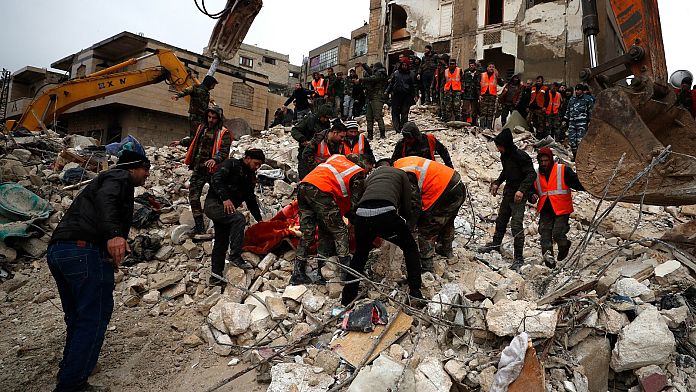Earthquakes are measured using a seismograph. It is the primary earthquake-measuring instrument. The seismograph produces a digital graphic recording of the ground motion caused by the seismic waves.
The digital recording is called a seismogram. A network of worldwide seismographs detects and measures the strength and duration of the earthquake’s waves.
How are earthquakes measured in 2023?
The Richter scale is not very accurate in measuring these larger earthquakes and today scientists use the Moment Magnitude Scale which uses the same logarithmic scale but which more accurately measures the strength of larger earthquakes.
They are measured on a scale called the moment magnitude scale or MMI.
Why isn’t the Richter scale used anymore?
Earthquakes, until recently, have been measured on the Richter scale. The Richter scale measures the magnitude of an earthquake (how powerful it is). It is measured using a machine called a seismometer which produces a seismograph.
The Richter scale is an outdated method for measuring magnitude that is no longer used by the USGS for large, teleseismic earthquakes. The Richter scale measures the largest wiggle (amplitude) on the recording, but other magnitude scales measure different parts of the earthquake.
The largest earthquake ever recorded was in Chile in 1960, which measured 9.5 on the Richter scale.
How powerful are the tremors in an earthquake?
Earthquakes measuring 1-2 on the scale happen regularly, and they are so small that people cannot feel them. Earthquakes measuring upwards of 7 are less frequent but very powerful and can cause a lot of destruction.
A tremor of 2.5 or less usually cannot be felt but can be detected by instruments. Quakes of up to five are felt and cause minor damage.

The Turkish earthquake at 7.8 is classified as major and usually causes serious damage, as it has in this instance. Causing havoc and destruction in Syria and Turkey, with neighboring Lebanon, Jordan, and Palestine reporting they felt the earthquake.
Anything above eight causes catastrophic damage and can totally destroy communities at its center.
Those earthquakes that measure between 1-3 generally take place very deep underground, and the more powerful an earthquake is, generally implies the closer it is to the surface.
What causes an earthquake, and how do earthquakes start?
Earthquakes are the sudden violent shaking of the ground. This happens because the Earth’s plates are constantly moving. Sometimes, because of friction, plates try to move and become stuck.
The pressure builds up because the plates are still trying to move. When the pressure is released, it sends out huge amounts of energy causing the Earth’s surface to shake violently.
The slip of one block of rock over another in an earthquake releases energy that makes the ground vibrate. That vibration pushes the adjoining piece of ground and causes it to vibrate, and thus the energy travels out from the earthquake hypocenter in a wave.
The seismic waves are most powerful at the epicenter. The epicenter is the point on the Earth’s surface directly above the focus.
The MMI scale, according to the US Geological Survey:
I Felt by very few people, if at all.
II Weak: Felt by a few people.
III Weak: Felt by several people, typically indoors and on upper floors.
IV Light: Felt by many indoors, few outdoors.
V Moderate: Felt by almost everyone.
VI Strong: Felt by everyone. Some slight damage.
VII Very strong: Considerable damage to poorly built structures.
VIII Severe: Considerable damage to standard buildings, and severe damage to poorly built structures.
IX Violent: Buildings shifted off foundations. Noticeable cracks in the ground, and widespread destruction.
X Extreme: Most masonry structures are destroyed.
…………………………………………………




